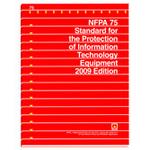Click here to purchase
Fire hoses play a vital role in controlling and extinguishing fires. Update to the 2013 NFPA 1961 to maximize equipment performance.
NFPA 1961: Standard on Fire Hose presents the minimum requirements for the design and construction of new fire hose, the testing required to verify the design and construction, and the inspection and testing required of all new fire hose.
This important document for fire hose manufacturers and the fire service applies to:
- Attack hose used by trained firefighters and fire brigade members in regular fire fighting operations
- Occupant use hose typically provided on standpipe systems for untrained building occupants to use
- Forestry hose used in wildland fire suppression
- Supply hose (large diameter hose) used to convey water from its source to fire apparatus at a fire scene
- Suction hose used to get water into a pump when the water must be pumped from a static source such as a lake or river
Fire hose reliability starts with the 2013 NFPA 1961. Order the today and make sure you’re working with the latest rules!
Revisions in the 2013 edition include a change in the maximum weight of a lined, synthetic woven reinforcement forestry fire hose assembly and new definitions for Design Service Test Pressure and Service Test Pressure.
Product Details
- Published:
- 06/18/2012
- ISBN(s):
- 9781455904501
- Number of Pages:
- 23

